15 years one-stop China custom CNC machining parts factory
 258 |
Published by VMT at Oct 02 2024
258 |
Published by VMT at Oct 02 2024
ABS plastic, short for Acrylonitrile Butadiene Styrene, is one of the most popular thermoplastic materials used in various industries. Known for its excellent balance of strength, durability, and flexibility, ABS is favored for both prototyping and large-scale production. Its versatility makes it suitable for industries ranging from automotive and electronics to consumer goods and medical devices. ABS plastic is widely used in CNC precision machining, 3D printing, and injection molding due to its machinability, affordability, and favorable material properties.
In this detailed guide, we will dive into the properties of ABS plastic, the different grades available, the various manufacturing processes used to work with ABS, its advantages and disadvantages in rapid prototyping, and its wide range of applications. By the end of this article, you will have a comprehensive understanding of ABS plastic and its role in CNC machining services and other manufacturing processes.
ABS plastic is a thermoplastic polymer made from three monomers: acrylonitrile, butadiene, and styrene. Each of these components contributes unique properties to the material:
Together, these components make ABS a highly versatile plastic suitable for various manufacturing techniques such as CNC machining, injection molding, extrusion, and 3D printing. It is also recyclable, which adds to its appeal in industries focused on sustainability.
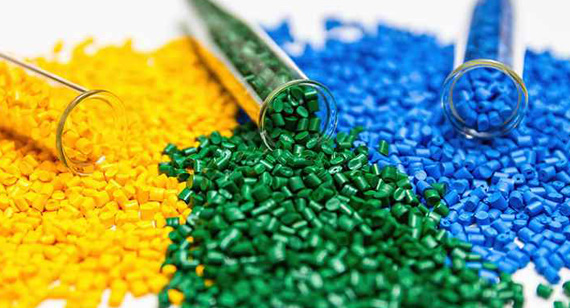
The wide use of ABS plastic across different sectors can be attributed to its remarkable properties. These characteristics make it ideal for applications requiring impact resistance, surface finish, and durability. Let’s explore some of the key properties of ABS plastic.
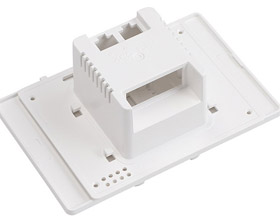
1. Impact Resistance
ABS plastic is known for its excellent impact resistance. This makes it a preferred material in industries where components are subject to high stress or potential impacts, such as automotive parts, helmets, and protective gear. ABS absorbs energy efficiently, which prevents it from cracking or breaking under sudden force.
2. Excellent Insulator
ABS has good electrical insulation properties, which makes it a popular choice in the electrical and electronics industries. It is often used for enclosures, housings, and other parts where electrical insulation is critical.
3. Abrasion Resistance
In addition to its impact strength, ABS exhibits high resistance to wear and abrasion. This property ensures that parts made from ABS maintain their integrity even after extended use in demanding environments. This characteristic makes it suitable for parts that undergo repeated physical contact or movement, such as gears and handles.
4. Surface Brightness
One of the reasons ABS is used in consumer products is its ability to produce smooth, glossy surfaces. The material's natural surface finish is aesthetically pleasing, making it ideal for parts that require visual appeal. In addition, ABS is easily painted, polished, and finished, offering greater flexibility in achieving different surface effects.
5. Chemical Resistance
ABS offers decent resistance to chemicals like acids, alkalis, and oils. This property makes it suitable for industrial applications where exposure to harsh substances is common. However, it is not resistant to all chemicals, particularly organic solvents, so this should be taken into account when choosing ABS for specific applications.
6. Recycling
ABS is recyclable, which is an advantage for manufacturers looking to reduce waste and promote sustainability. Recycled ABS maintains many of the properties of virgin material, making it suitable for a wide range of applications without sacrificing quality.
ABS plastic is available in several grades, each designed to meet specific performance criteria. The choice of grade depends on the intended application and the manufacturing process. Below are the most common ABS grades.
1. ABS Extrusion Grade
Extrusion-grade ABS is formulated for processes that involve pushing the material through a die to create long, continuous shapes like pipes, sheets, or profiles. This grade has excellent flow characteristics, making it ideal for producing large or complex shapes.
2. ABS Flame Retardant Grade
This grade of ABS contains flame-retardant additives, making it suitable for applications where fire safety is critical. Flame-retardant ABS is commonly used in electronics, automotive interiors, and electrical enclosures where strict fire resistance standards must be met.
3. ABS Injection Molding Grade
Injection molding-grade ABS is engineered for high fluidity, allowing it to fill molds easily. This grade is ideal for producing intricate shapes and parts with fine details, making it the preferred choice for manufacturing large quantities of small to medium-sized plastic parts, such as automotive components and consumer products.
4. Other Grades of ABS Plastic
There are several other specialized grades of ABS, including high-impact grades, UV-resistant grades, and grades designed for specific uses in industries such as medical devices or outdoor applications. These custom grades offer tailored properties to meet the exact requirements of the end-use application.
ABS plastic is versatile and compatible with a variety of manufacturing processes. Each process offers unique advantages, making it suitable for different applications. Let’s take a look at the most common methods for processing ABS plastic.
1. 3D Printing of ABS
3D printing is a popular method for creating ABS CNC machining parts and prototypes, particularly in rapid prototyping. However, there are some drawbacks to using ABS for 3D printing.
2. CNC Machining of ABS
CNC machining is a precise method for producing high-quality plastic CNC machining parts from ABS. When machining ABS, several factors need to be considered:
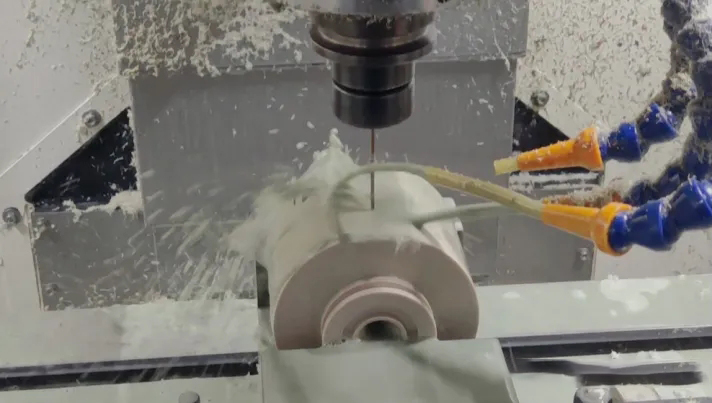
3. ABS Injection Molding
Injection molding is the most common process for producing ABS parts in large quantities. However, some challenges need to be addressed during molding:
4. Extrusion
Extrusion is used to create continuous profiles of ABS, such as sheets, pipes, and tubes. The material is heated and pushed through a die to form the desired shape. This process is ideal for large-scale production of ABS parts with consistent cross-sections.
5. Blow Molding
Blow molding is used to create hollow ABS parts, such as bottles and containers. In this process, air is blown into the molten plastic, causing it to expand against the walls of a mold, forming the hollow part.
6. Thermoforming
Thermoforming involves heating a sheet of ABS plastic and forming it over a mold to create a desired shape. It is often used for large parts like automotive panels or packaging trays.
ABS plastic is widely used in rapid prototyping due to its favorable mechanical properties and ease of processing. However, it has both advantages and disadvantages in this context.
Advantages of Using ABS in Rapid Prototyping
Reasonable Production Cost and Beautiful Structure: ABS is affordable, making it a cost-effective choice for prototyping. Its surface finish is smooth and easy to work with.
Good Surface Effect: ABS has a naturally smooth surface, which can be further polished, painted, or finished to achieve the desired aesthetic effect.
High Wear Resistance, Stability, and Strength: ABS offers excellent mechanical strength and durability, making it suitable for functional prototypes that need to withstand mechanical stress.
Disadvantages of Using ABS in Rapid Prototyping
Curling, Cracking, or Twisting: ABS may deform during the manufacturing process, particularly when exposed to high temperatures.
Requires Skilled Handling: Working with ABS can be challenging, particularly in processes like 3D printing, where professional expertise is required to prevent defects.
Varied Results: ABS produces different results depending on the process used, especially in 3D printing, where factors like temperature control are crucial.
ABS plastic is used in a wide range of industries due to its versatility, strength, and durability. Here are some of the most common applications of ABS plastic.
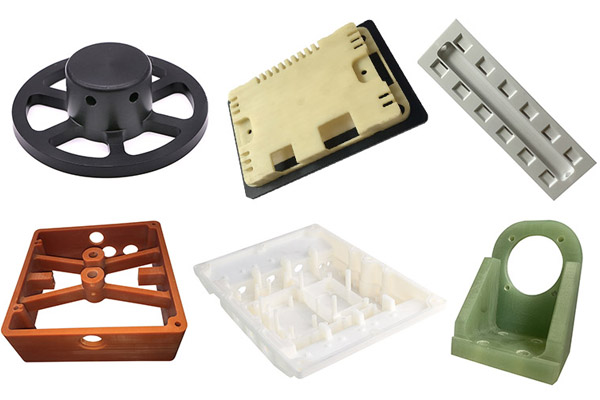
ABS is widely used in the automotive industry for parts such as dashboards, interior trim, and body panels. Its toughness and heat resistance make it ideal for automotive components that must withstand heavy use and exposure to temperature changes.
ABS is used in electrical enclosures and housings due to its excellent insulating properties. It is commonly found in consumer electronics, electrical outlets, and appliance housings.
3. Office Equipment
Printers, copiers, and other office equipment often feature ABS components due to its ability to be molded into complex shapes while providing durability and aesthetic appeal.
4. Household Appliances
ABS is frequently used in household items such as vacuum cleaners, kitchen appliances, and toys due to its strength, impact resistance, and ease of coloring or finishing.
5. Consumer Electronics
ABS plastic is commonly used in the production of smartphones, laptops, and other electronic devices due to its durability and smooth surface finish.
6. Medical Equipment and Devices
ABS is used in the medical field for equipment housing and some medical devices. Its toughness and ability to be sterilized make it suitable for use in healthcare environments.
7. Sports and Entertainment Equipment
ABS is used in the manufacturing of protective gear such as helmets and sports equipment due to its impact resistance and lightweight properties.
While ABS is highly versatile, several other plastics share similar properties and may be used in similar applications. Below are some common alternatives to ABS plastic.
1. Polystyrene (PS)
Polystyrene is a rigid, inexpensive plastic often used in packaging and disposable items. It is less impact-resistant than ABS but is widely used due to its cost-effectiveness.
2. Polypropylene (PP)
Polypropylene is another durable, lightweight plastic with good chemical resistance. It is often used in automotive parts, packaging, and medical devices.
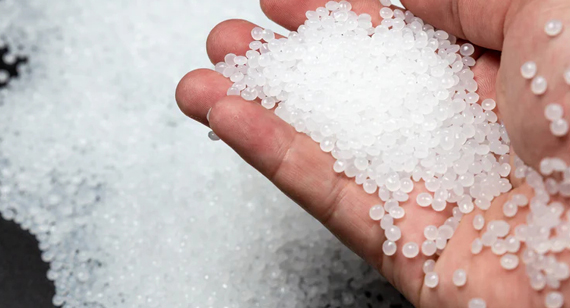
3. Polycarbonate (PC)
Polycarbonate is known for its impact resistance and optical clarity, making it suitable for applications like optical lenses and protective gear. It is stronger but more expensive than ABS.
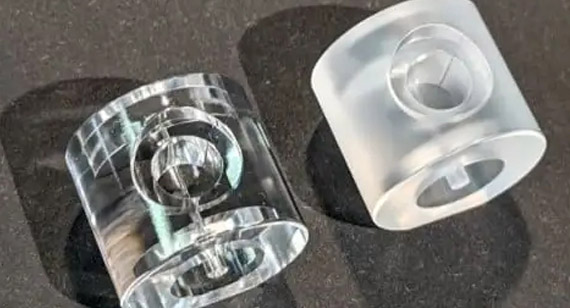
4. Polyethylene (PE)
Polyethylene is a versatile plastic used in packaging, containers, and consumer goods. It is known for its flexibility, but it lacks the rigidity and impact strength of ABS.
5. Polyamide (Nylon)
Nylon is a strong, flexible plastic with excellent wear resistance. It is often used in mechanical components such as gears and bearings, as well as in textiles and consumer goods.
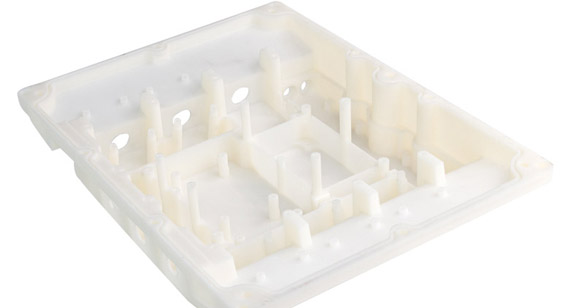
ABS plastic remains one of the most widely used materials in manufacturing due to its excellent balance of strength, durability, and cost-effectiveness. Whether you’re working with ABS CNC machining parts or producing large quantities through injection molding, ABS offers a versatile solution for a wide range of industries. With its broad range of applications and compatibility with different manufacturing processes, ABS is a go-to material for CNC machining services, prototyping, and large-scale production.
At VMT, we specialize in custom CNC machining and offer CNC prototype machining services that ensure high-quality ABS parts for all industries. Our team of experts is equipped to handle complex designs and deliver precise, durable components tailored to your needs.
What type of material is ABS?
ABS (Acrylonitrile Butadiene Styrene) is a thermoplastic polymer known for its strength, impact resistance, and durability. It is used in a variety of industries, including automotive, electronics, and consumer goods.
Is ABS plastic toxic?
ABS plastic is generally considered non-toxic. It is commonly used in consumer products and food-safe applications, though it is important to ensure the material is properly processed to avoid any harmful by-products during manufacturing.
For prototype manufacturing, which is better, ABS plastic or ordinary plastic?
ABS plastic is preferred for prototypes due to its strength, impact resistance, and ease of processing. While ordinary plastics may be less expensive, ABS offers better performance and surface finish, making it ideal for functional and aesthetic prototypes.
Is ABS plastic stronger than plastic?
ABS plastic is stronger than many general-purpose plastics due to its combination of strength, impact resistance, and toughness. It’s known for being more durable than common plastics like polystyrene or polypropylene. However, there are other specialty plastics like polycarbonate (PC) that can be stronger than ABS, depending on the application.
Does ABS plastic melt easily?
ABS has a relatively low melting point of about 105°C (221°F) compared to high-performance plastics, but it does not melt "easily" under normal conditions. It softens when heated but is commonly used in applications where it is unlikely to reach melting temperatures, such as in automotive parts, consumer electronics, and toys.
Is ABS better than PVC?
The choice between ABS and PVC depends on the application:
ABS is more impact-resistant, has better shock absorption, and is lighter than PVC. It’s often used in automotive parts and consumer goods.
PVC is more rigid and offers superior chemical and fire resistance. It is commonly used in piping and electrical insulation. For impact resistance and ease of machining, ABS is generally better, but for chemical and environmental resistance, PVC is more suitable.
Which plastic is the strongest?
Polycarbonate (PC) is often considered one of the strongest plastics due to its high impact resistance and toughness. It is used in applications like bulletproof glass and safety helmets. While ABS is strong, polycarbonate surpasses it in strength.
Does ABS plastic break easily?
ABS plastic is generally durable and does not break easily under normal usage. It’s prized for its toughness and ability to withstand impacts, making it suitable for applications like automotive parts and protective gear. However, it can become brittle at low temperatures or after prolonged exposure to UV light.
Which is stronger, ABS or PVC?
In terms of impact resistance, ABS is stronger than PVC. ABS has better toughness and flexibility, making it ideal for products that need to withstand physical impact. PVC is more rigid and has better chemical resistance but is brittle compared to ABS.
